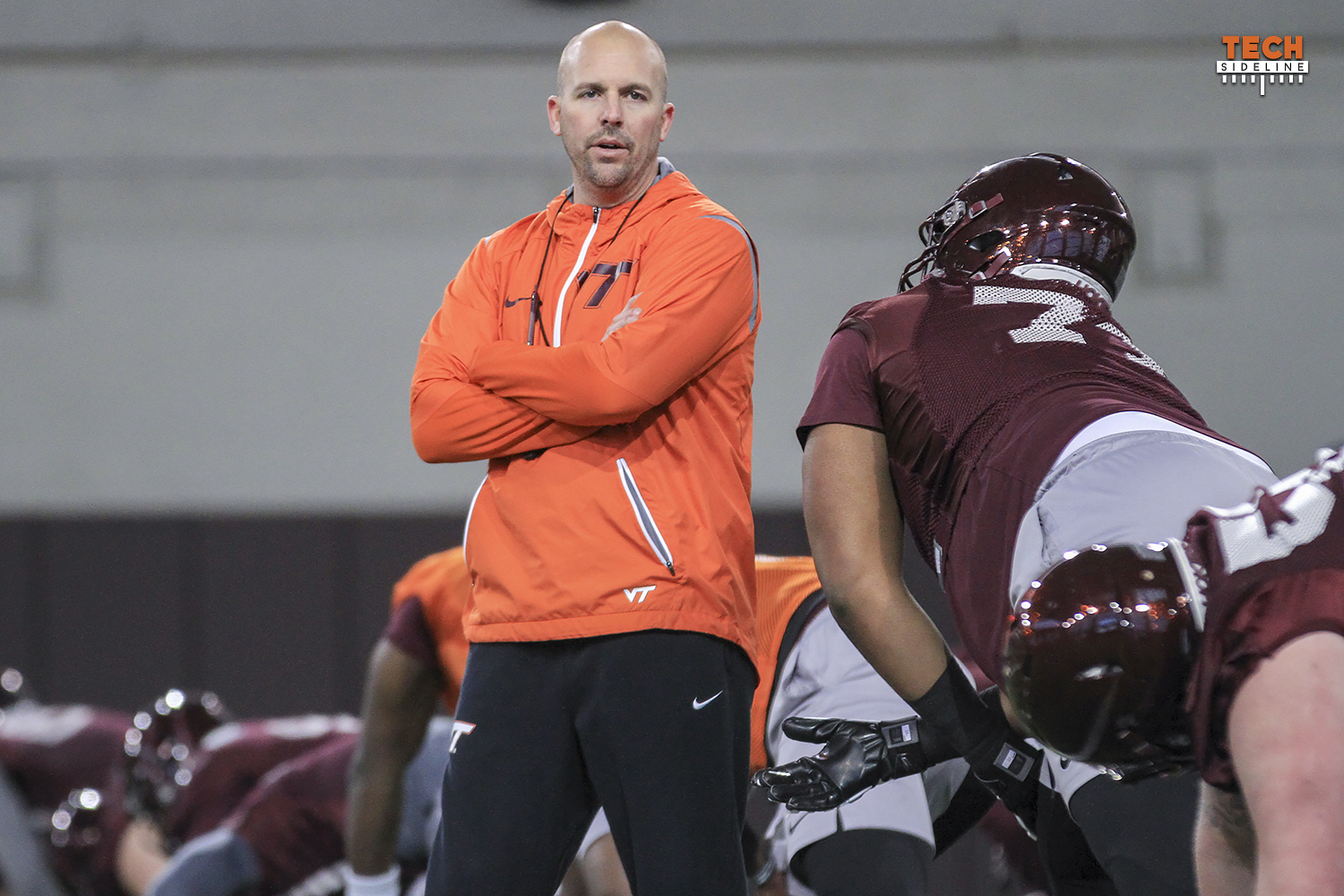
We’ve now had a few years of experience with the Virginia Tech offensive scheme, and in that time enough info has gotten out to where we aren’t just limited to reviewing what we see in the games. Instead, thanks to coaches and players giving insight into their thinking and terminology, we can take a deeper dive into the system. (This is in stark contrast to the defense, where I’m not even sure if the team has a “backer” or “will linebacker” these days.)
My goal over the next few weeks is to make a “fan’s playbook.” We’ll look at how the coaches think about plays and categorize them, break down their core schematic elements, examine different play types, and wrap up with a thorough look at many of the individual plays and concepts that we’ve seen them use from 2016 through 2020. This will be diagram-heavy, and we’ll use raw coaches’ film (all-22 and endzone angle) as much as we can. Many of the items we’ve looked at before, there’s also going to be plenty of new info and videos.
Before we get into the specifics, let’s review a few core play types that can be tricky to distinguish. We’ll be referring to these different types of plays quite a bit:
Zone-Blocked Runs: On these plays, almost all the blockers step in the same direction as wherever the primary runner is going and try to get the defense moving in roughly the same way. Where the hole opens depends on what the defense does, so the runner has to be alert. On this Split Zone Read, you can see how most of the blockers step to the right in the same direction as the running back (the only blocker not going with the primary run is the H-back, who is arrowed in the clip):
...Subscribe to read full story
Tired of low effort articles and clickbait? So are we. Subscribe to read great articles written by a full-time staff with decades of experience.
Already a subscriber? Login Here



